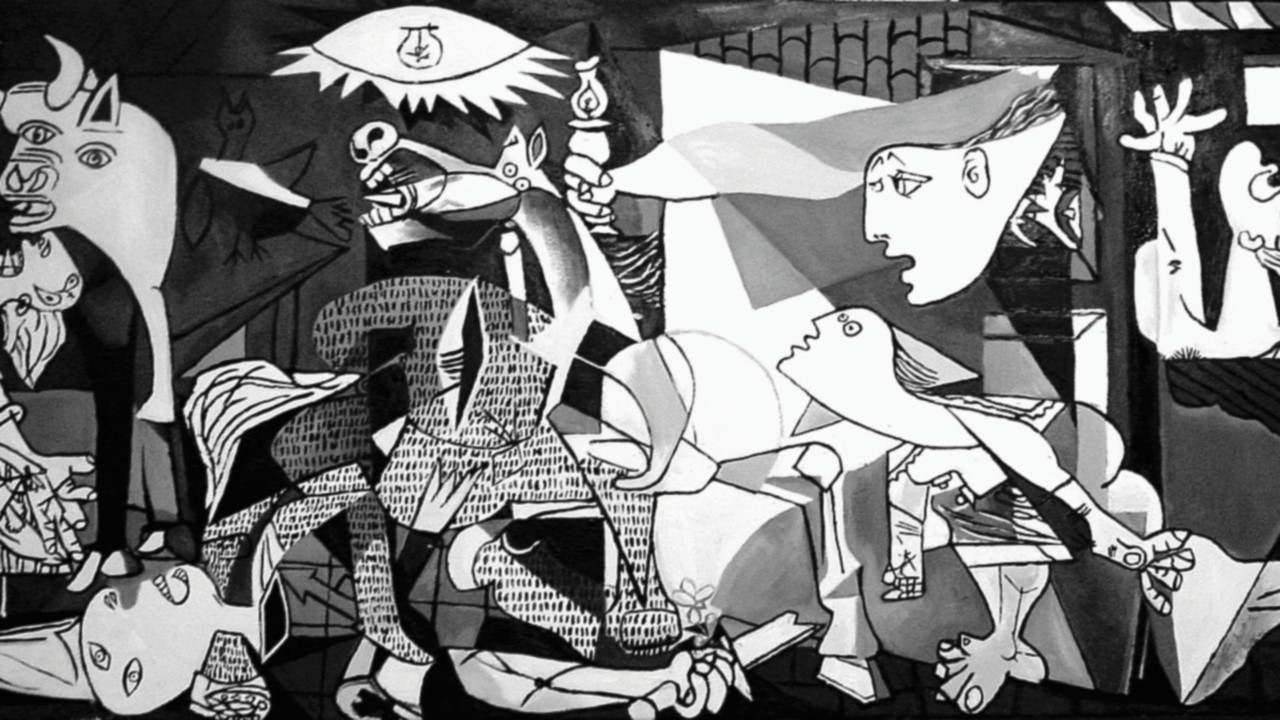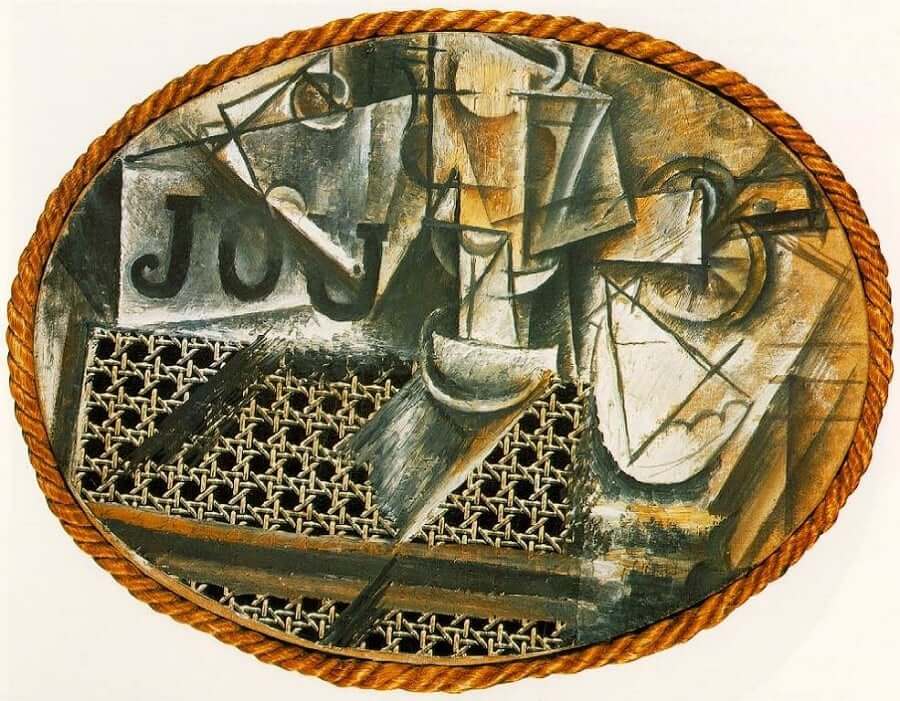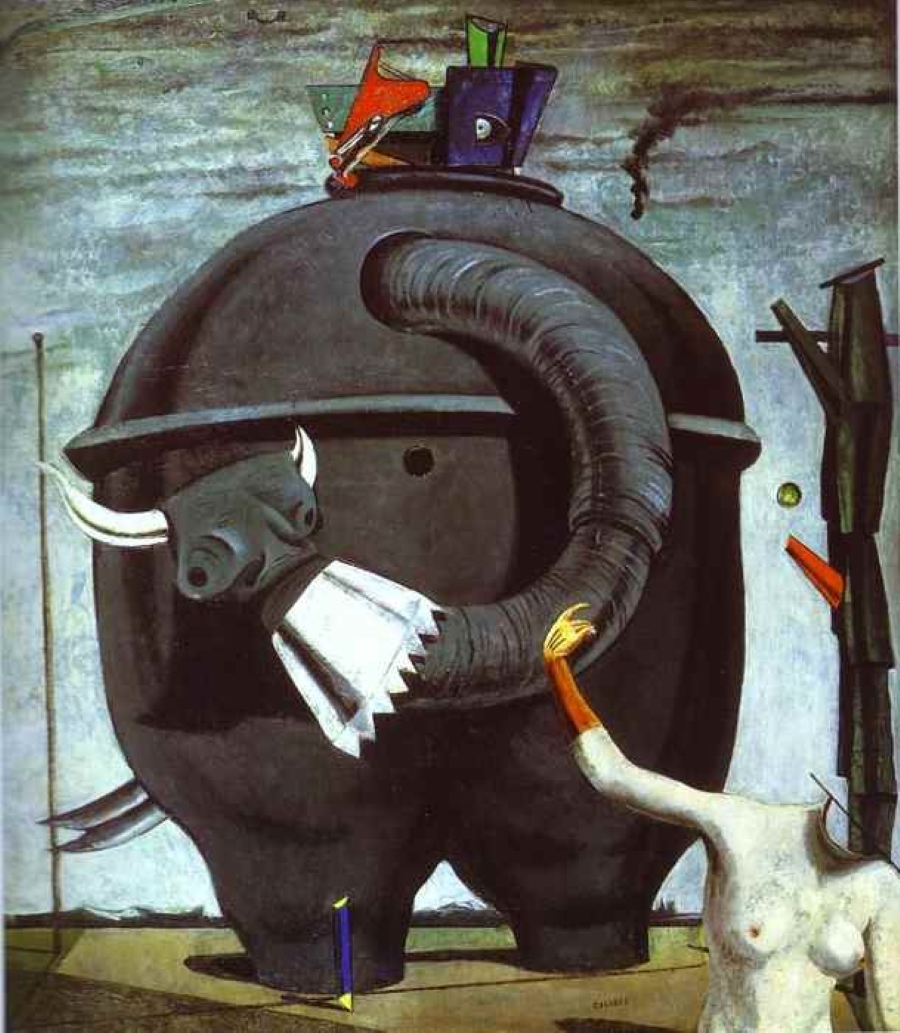
Pablo Picasso: Revolutionising art through collage
This year marks the 50th anniversary of Spanish artist Pablo Picasso’s death, and institutions across Europe and the US are paying homage to him.
The Musée Picasso, Paris recently invited the British designer Paul Smith to direct an exhibition titled ‘Picasso Celebration: The Collection in a New Light’, which showcases pieces from the museum’s collection and Picasso’s personal archive, all set against the designer’s signature colours and striped walls. The Guggenheim, meanwhile, is focusing on one year in his life, showing some of the works on paper he created after he moved to Paris.
Pablo Picasso: An innovative artist and a revolutionary medium
Widely hailed as one of the most influential painters of the 20th century, Picasso (1881–1973) is most famous for the painting he made in response to the Spanish civil war, ‘Guernica’ (1937), and left an indelible mark on the history of modern art. One of the ways he revolutionised the art world through his bold use of collage, challenging the boundaries of traditional artistic mediums.
 Guernica, Pablo Picasso, c. 1937
Guernica, Pablo Picasso, c. 1937In fact, the technique known as collage is thought to have been invented either by Picasso or by Georges Braque, who both developed a very unique Cubist style, in 1912 as they boldly decided to paste bits of newspapers and sheet music onto their canvases, ushering in a new era of artistic experimentation.
Collage: A world of fragments
The word “collage” comes from the French verb “coller,” which means “to paste”. Through this artistic medium, what we really see isn’t that important, in the way it was before, since the Renaissance. At the time, this was quite controversial, in that it defied the established notion of high art. Picasso questioned the traditional idea that art should be created solely from scratch using traditional artistic materials, and the separation between art and life.
After experimenting with making collages and playing with perceptions of reality, Picasso and Braques started to create oil paintings that simulated this technique.
 Oil Mill, Pablo Picasso, c. 1909, © Metropolitan Museum of Art
Oil Mill, Pablo Picasso, c. 1909, © Metropolitan Museum of ArtAfter experimenting with making collages and playing with perceptions of reality, Picasso and Braques started to create oil paintings that simulated this technique.
Picasso’s painting ‘Oil Mill’, created in 1909, is part of his early Cubist period and an iconic work within the movement, showcasing Picasso's experimentation with fragmented forms. He painted the landscape while he was staying in the picturesque village of Horta de Ebro (present-day Horta de Sant Joan) in Catalonia. In the painting, he simplified the rural architectural structures to their geometric forms in the foreground, and you can see mountains in the distance.
‘Bowl of Fruit, Violin and Bottle’, which dates to 1914, is another work in which he depicted a fruit-bowl, bottle, violin and newspaper atop a table in a way that seemed as though he had used cut-out pieces of paper.
Picasso's collage masterpieces
Picasso incorporated an array of materials in his groundbreaking works, ranging from found objects like newspaper clippings, sheet music, and fabric to everyday items such as cigarette wrappers and playing cards. These collaged elements added texture, depth, and conceptual richness to his creations.
 Still Life with Chair Caning, Pablo Picasso, c. 1912
Still Life with Chair Caning, Pablo Picasso, c. 1912Examples of Picasso's notable collages include 'Still Life with Chair Caning' (1912), in which he pasted an oilcloth onto an oval-shaped canvas framed with rope featuring a machine-printed chair caning pattern. He made 'Guitars' (1912–1914), a three-dimensional assemblage, by cobbling together cardboard, strings, paper and wire, and created a revolutionary sculpture.
Another work that demonstrates Picasso's mastery of combining different elements is 'Bottle of Vieux Marc, Glass, Guitar and Newspaper', a papier collé he made in 1913 featuring abstract forms, including a guitar, a glass, a piece of Le Figaro newspaper and a bottle of wine. He made this by using coloured papers and also drawing lines with ink, and if you look closely you’ll see ‘Vieux’ is handwritten on the bottle’s neck.
As pointed out by art historian Brandon Taylor, during this time Picasso
had become adept at sprinkling his papier collés with references to all kinds of great and small events – wars and catastrophes on a global scale right down to the petty but heart-rending fait divers.
In 'Head of a Man with Hat' (1912), he made a portrait of a man with inventive flair, using cut-and-pasted newspaper and coloured paper, ink, and charcoal on paper.
'Au Bon Marché' (1912) incorporates an advertisement fragment from the famous Parisian department store, showcasing Picasso's utilisation of found printed materials and his exploration of the relationship between art and consumer culture.
Legacy and influence: Picasso’s influence on other great artists
Picasso’s innovative approach inspired other artists and became a catalyst for artistic movements such as Cubism, Dada and Surrealism, which embraced the use of collage as a means of creative expression. He is also regarded as a pioneer in the creation of mixed-media works, a term widely used in the art world today.
 Celebes, Max Ernst, c. 1921
Celebes, Max Ernst, c. 1921The German Surrealist artist Max Ernst, for example, created works like ‘Celebes’ (1921), which shows a mechanical monster in dreamlike surroundings in a collage-like composition. Robert Rauschenberg, a key artist in the Pop Art movement, was also passionate about collage and assemblage-based creations and made artworks like ‘Bed’ (1955) in which he combined a quilt, pillow, and sheet with paint and pencil marks, blurring the line between traditional painting and sculpture and transforming the everyday into art.
Many contemporary artists have also been inspired by Picasso’s use of collage, such as American artist Faith Ringgold. Her work ‘Die,’ from her American People Series (1967), which explores race relations in the United States in the 1960s, for example, is reminiscent to Picasso’s ‘Guernica’(1937), which she looked at very closely when it was on loan at MoMA from 1939 to 1981.
For more exclusive insights into the world of art, don’t miss our review of the fascinating Picasso Chanel show at the Museo Nacional Thyssen-Bornemisza in Madrid.
Credits for the Main photo: Nature morte au compotier (Still Life with Compote and Glass), Pablo Picasso, c. 1914-15. © Columbus Museum of Art via Wikipedia Commons
